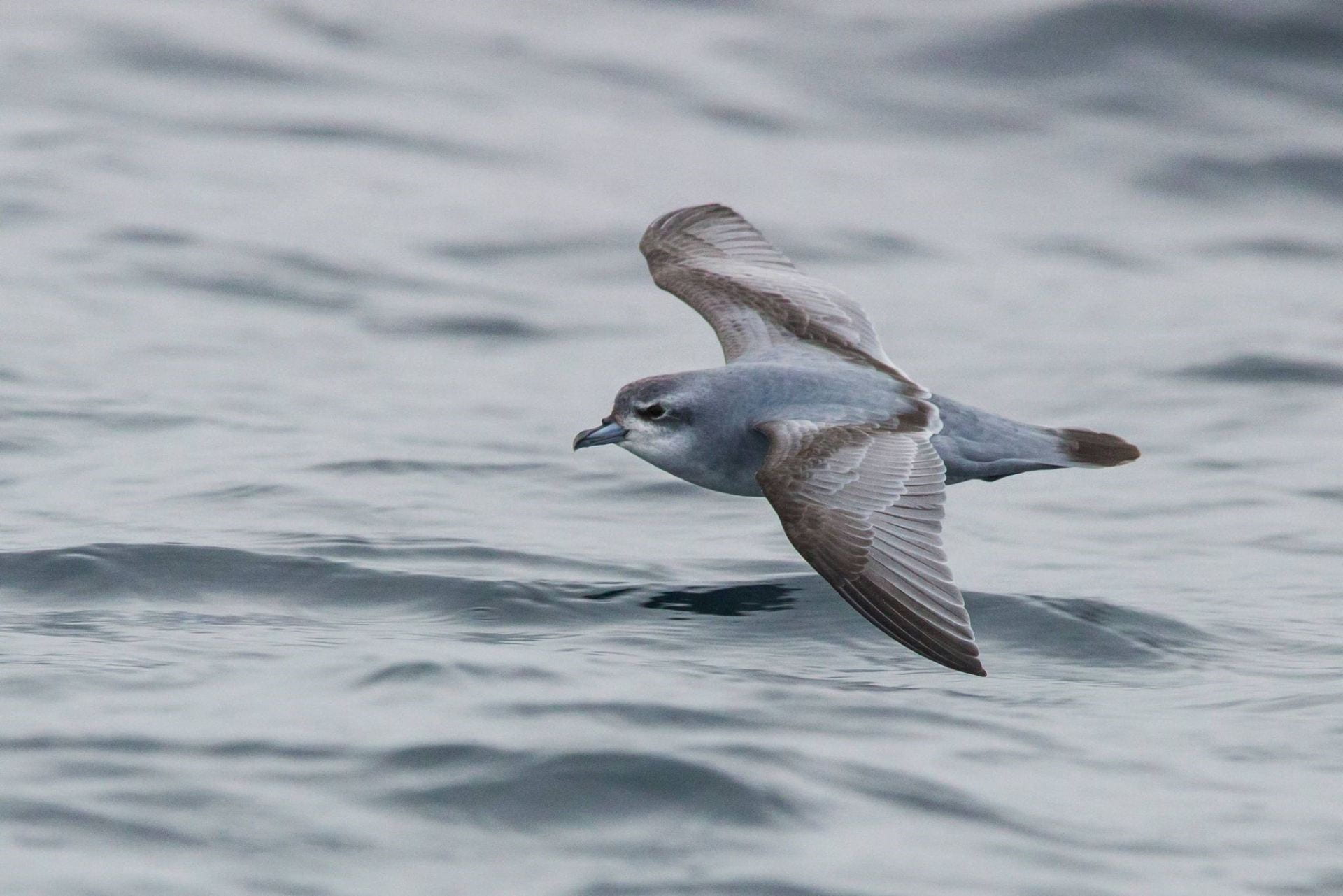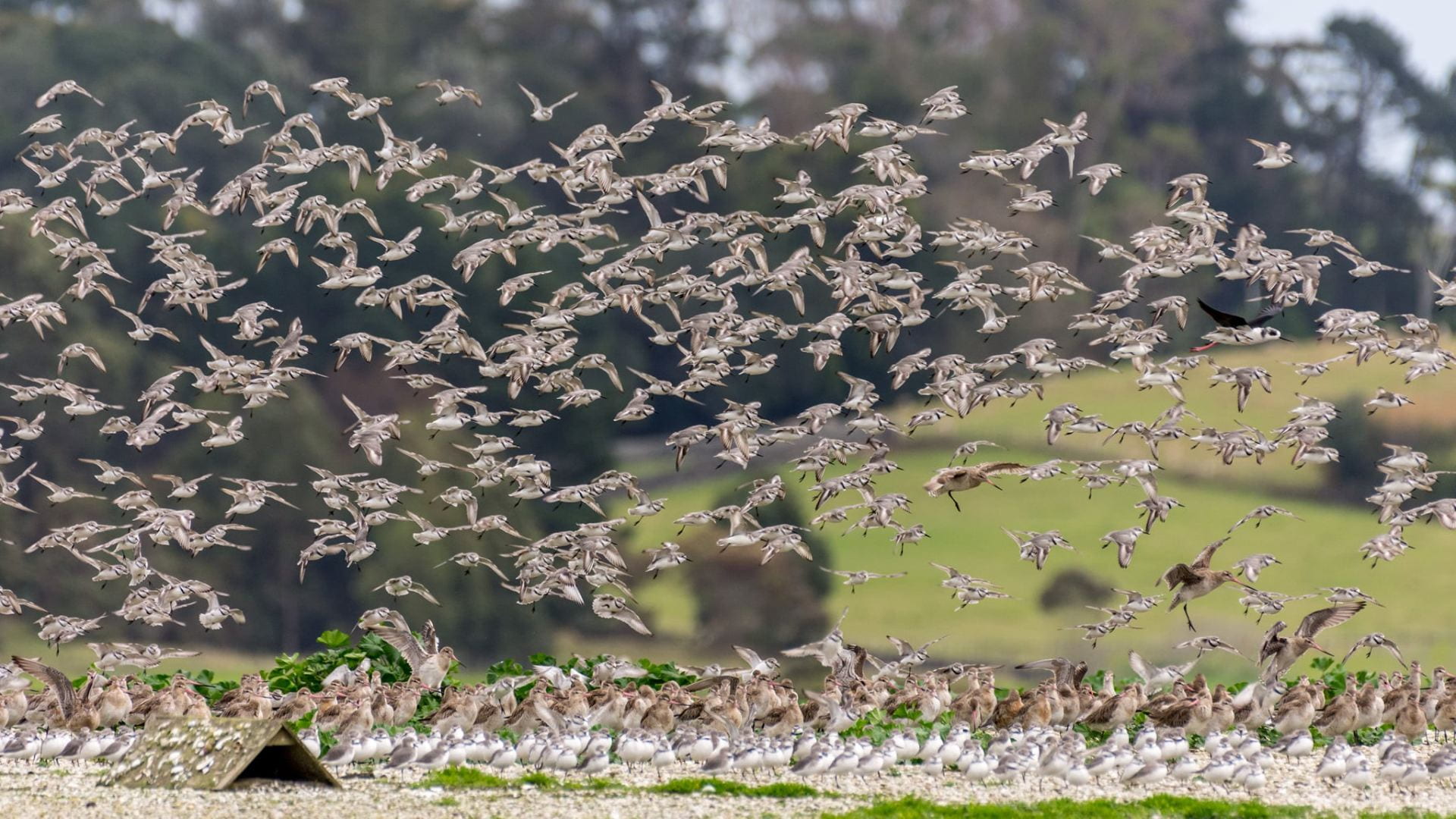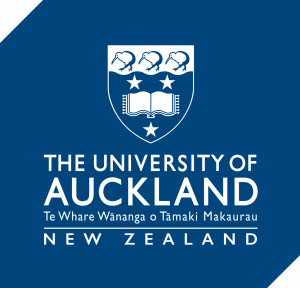AOC Field Trips and Excursions
Following the conference, AOC is hosting four uniquely Tāmaki Makaurau/Auckland ornithological experiences.
Join us and other like-minded bird-watchers on one of the below.
All excursions will take place on Friday 11 February 2022.
Hauraki Gulf Pelagic Cruise
Meet at Auckland University 0815, depart 0830; return c.1730.
Includes: A 6 hour Guided Pelagic Cruise, Picnic Lunch and return transport from Auckland University.
Join Wrybill Tours on a Hauraki Gulf seabird tour to see a unique range of locally endemic seabirds. Leaving from Sandspit and heading into the Hauraki Gulf out past to Te Huaturu-o-Toi/Little Barrier Island. The Auckland marine environment is an internationally recognised region of high biodiversity value. Seabirds, as top predators, are key components of this ecosystem. The region boasts one of the highest diversities of seabirds in the world with over 80 species recorded for the wider Hauraki Gulf region. These include seabirds that breed here, breed elsewhere but forage and feed within the region’s water or are just passing through.
Hauraki Gulf islands are vitally important refugia for seabirds. Seabird populations now rebounding in the wake of eradication programmes for introduced predators (from 1990). Twenty-five species of seabirds are confirmed breeding in the Hauraki Gulf: Cook’s, Pycroft’s, grey-faced and black petrels, Buller’s, little, flesh-footed, fluttering and sooty shearwaters, fairy prion, white-faced storm petrel, common diving petrel, blue penguin, Australasian gannet, pied shag, and gulls and terns. We regularly see the recently rediscovered NZ storm petrel which has been confirmed breeding on Te Huaturu-o-Toi/Little Barrier Island.
Pricing
Standard – $440
Student/Unwaged – $380

New Zealand Storm Petrel (Photo credit: Scott Brooks)

Fairy Prion (Photo credit: Oscar Thomas)
Pukorokoro/Miranda Shorebird Centre
Meet at Auckland University 0945, depart 1000; return c.1700.
Includes: Picnic Lunch and return transport from Auckland University.
Miranda Shorebird Centre (www.miranda-shorebird.org.nz) on the Firth of Thames is one of the best, and certainly the most accessible sites in New Zealand for shorebirds. The Firth is habitat to internationally important numbers of shorebird species, particularly wrybill plover: 40 per cent of the world population spend the non-breeding season (late December to early August) at Miranda. Birds likely to be at Miranda in early December include bar-tailed godwit, red knot, ruddy turnstone, Pacific golden plover, red-necked stint, and curlew sandpiper. Other visitors in recent years have included marsh sandpiper, greater sand plover, little curlew, ruff and red-necked phalarope. New Zealand species present may include wrybill, New Zealand dotterel, variable oystercatcher, South Island Pied oystercatcher, banded dotterel, black-billed gull, white-fronted tern, Caspian tern, Royal spoonbill and pied stilt. Other recent visitors have included black stilt and New Zealand shore plover.
Upon arrival at the Shorebird Centre you will be met by the Shorebird Centre Manager for an introductory talk about the shorebirds that use the Firth of Thames. Tea & coffee is available & you will have the opportunity to explore the exhibits of the centre. We will them move by coach to the Robert Finlay Reserve for a guided bird walk out to the birds hides to observe the shorebirds.
Operated by the Miranda Naturalists’ Trust (MNT), the Shorebird Centre is unique in New Zealand. A combination of information/education centre, research base and accommodation venue, it is open 7 days a week. The centre employs a full time manager and part-time assistant manager but mostly everything else is done by volunteers. Centre operations are largely funded through income from accommodation revenue, talks, shop sales, donations, member subscriptions, and funding agencies. Although based on the Firth of Thames, its key role as an advocate for shorebirds and their habitats sees MNT engaged with issues elsewhere within New Zealand and along the East Asian Australasian Flyway. Members have been actively involved in shorebird monitoring work as well as public awareness-raising events in China and Korea. In 2004 MNT signed a Memorandum of Understanding with staff from Yalu Jiang National Nature Reserve (YJNNR) in China, establishing a sister site partnership.
Pricing
Standard – $125
Student/Unwaged – $99

Bar-tailed Godwit (Photo credit: Craig McKenzie)

Shorebird Flock (Photo credit: Stefan Marks)
Tiritiri Matangi Island
Meet at Auckland University 0745, depart 0800; return 1715.
Includes: Return Ferry, Picnic Lunch, Guided Tour and return transport from Auckland University.
Tiritiri Matangi Island (commonly referred to as “Tiri”, www.tiritirimatangi.org.nz) is a wildlife sanctuary and is recognised both nationally and internationally as one of New Zealand’s most important and exciting conservation projects. The island is located 30km northeast of central Auckland. 120 years of farming had seen this 220-hectare island stripped of 94% of its native bush but between 1984 and 1994, volunteers planted between 250,000 and 300,000 trees. The island is now 60% forested with the remaining 40% left as grassland for species preferring open habitat. In conjunction with this planting programme, all mammalian predators were eradicated and a number of threatened and endangered bird and reptilian species have been introduced successfully, including the flightless takahe, one of the world’s bird rarest species. Nowhere else in New Zealand can you readily see and walk amongst so many rare species, including saddleback, stitchbird, red-crowned parakeet, brown teal, kokako and bellbird. The boat will depart from Auckland city and cruise past the islands of the inner Hauraki Gulf, with the possibility of seeing pelagic bird species along the way.
Pricing
Standard – $220
Student/Unwaged – $160

North Island Kokako (Photo credit: Suzi Phillips – NZ Birds Online)

North Island Saddleback (Photo credit: David Brooks – NZ Birds Online)
Manukau Harbour and the Auckland Museum
Meet at Auckland University 0715, depart 0730; return c.1300.
Includes: Manukau Harbour Visit with local Birds New Zealand Guides, Auckland Museum Tour and return transport from Auckland University. Lunch is not included, but time will be allocated for refreshments at the Museum café.
The Morning tour is a short bus bus-ride to observe the tidal flats, canal and wastewater pond on the shore of the Manukau Harbour, timed to coincide with the high tide around 7.15am. An area noted for wading birds, a recent summer survey of this area identified 38 bird species including Black-billed Gull, New Zealand Dotterel, Wrybill plover and Royal spoonbill.
The Auckland Museum (www.aucklandmuseum.com) holds one of the four bird collections in New Zealand, which, with the 10 in Australia together provide a tremendous resource for ornithological research in our biogeographic region. Auckland Museum has about 15,000 bird specimens, including mounts, study skins, contemporary bones, Holocene fossil bones, eggs, nests, spirit specimens, spread wings and feather-sheets. Ratites, Procellariiform seabirds, Charadriiforms and Passerines are particular strengths of the collection. A selection of specimens will be shown during a behind-the-scenes tour of the bird collection room. The neighbouring entomology department will also be visited, and the collection tours will be followed by a look at ornithological highlights (particularly extinct birds) in the museum’s natural history galleries.
Pricing
Standard – $105
Student/Unwaged – $85

Long-tailed Cuckoo (Auckland War Memorial Museum)

